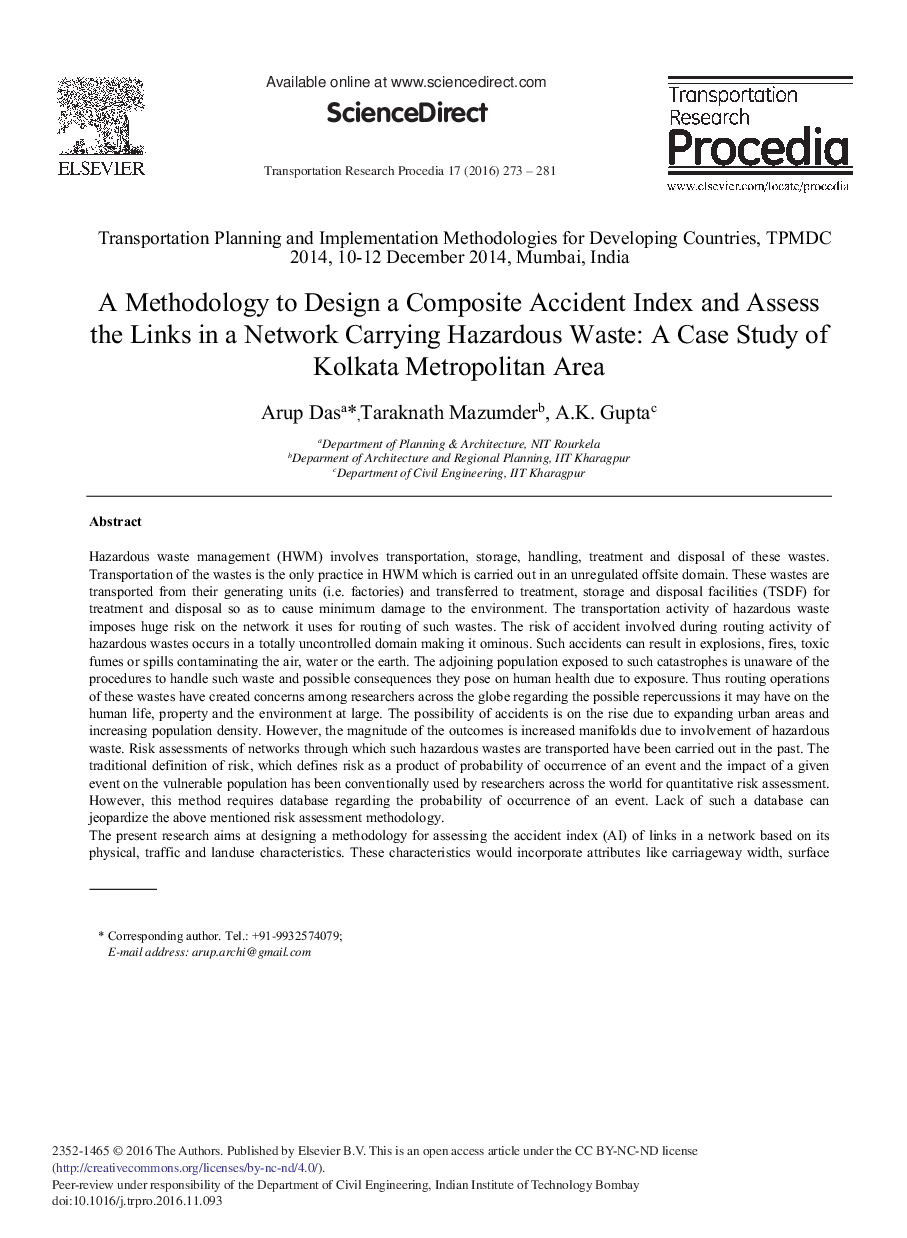| کد مقاله | کد نشریه | سال انتشار | مقاله انگلیسی | نسخه تمام متن |
|---|---|---|---|---|
| 5125580 | 1488278 | 2016 | 9 صفحه PDF | دانلود رایگان |
Hazardous waste management (HWM) involves transportation, storage, handling, treatment and disposal of these wastes. Transportation of the wastes is the only practice in HWM which is carried out in an unregulated offsite domain. These wastes are transported from their generating units (i.e. factories) and transferred to treatment, storage and disposal facilities (TSDF) for treatment and disposal so as to cause minimum damage to the environment. The transportation activity of hazardous waste imposes huge risk on the network it uses for routing of such wastes. The risk of accident involved during routing activity of hazardous wastes occurs in a totally uncontrolled domain making it ominous. Such accidents can result in explosions, fires, toxic fumes or spills contaminating the air, water or the earth. The adjoining population exposed to such catastrophes is unaware of the procedures to handle such waste and possible consequences they pose on human health due to exposure. Thus routing operations of these wastes have created concerns among researchers across the globe regarding the possible repercussions it may have on the human life, property and the environment at large. The possibility of accidents is on the rise due to expanding urban areas and increasing population density. However, the magnitude of the outcomes is increased manifolds due to involvement of hazardous waste. Risk assessments of networks through which such hazardous wastes are transported have been carried out in the past. The traditional definition of risk, which defines risk as a product of probability of occurrence of an event and the impact of a given event on the vulnerable population has been conventionally used by researchers across the world for quantitative risk assessment. However, this method requires database regarding the probability of occurrence of an event. Lack of such a database can jeopardize the above mentioned risk assessment methodology.The present research aims at designing a methodology for assessing the accident index (AI) of links in a network based on its physical, traffic and landuse characteristics. These characteristics would incorporate attributes like carriageway width, surface condition of the links, congestion, night time visibility, pedestrians and non-motorized traffic on the link, type of adjoining landuse, etc. This index is designed based on the principles of aggregation used for designing environmental indices. AI act as a complementary tool in the assessment of risk in a network. Thus, unavailability of accident database would not deter researchers or industrial practitioners from assessing the risk posed due to hazardous waste transportation through a network. This can also be used to identify causal relationship between the attributes of AI and probability of occurrence of an event where such datasets are available. A regional network can be further analyzed based on the AI values of its constituent links and vulnerable links with high propensity of an accident can be identified. The proposed methodology has been demonstrated using the case study of the road network of Kolkata Metropolitan Area (KMA). Spatial analyses of the distribution of AI values over the network revealed concentration of AI values in few links of the network. The analyses of the network of KMA revealed that 4% links had AI values 3.5 to 5 times the mean AI value of the network. This analysis can be used for designing appropriate policy interventions for specific links of a network to reduce accident propensity of in a regional network.
Journal: Transportation Research Procedia - Volume 17, 2016, Pages 273-281
